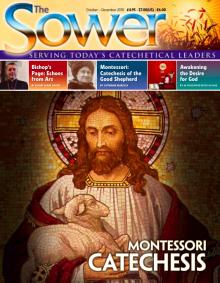‘On the Spot’ aims to highlight some of the complex positions, questions and comments experienced by Catechists, teachers and parents. It tries to outline the knowledge necessary to be faithful to Church teaching and which will best help those we teach who call us to account for the hope that is in us. This time we look at how we convey a sense of the Real Presence of Christ in the Eucharist.
What we do will usually leave a firmer, longer-lasting and deeper impression on our children than what we say. This is a universal and timeless fact. Children learn how to behave, how to speak, dress, relate to others, to drink, smoke and take drugs, or to be selfless workers for peace and justice, by observing other people, not always consciously.
Why would it be different in faith and worship? If children observe adults and older children keeping silence in church, as much as possible, genuflecting before the Tabernacle, kneeling at the Consecration, bowing or kneeling when the Blessed Sacrament is taken from the Church to the sick at the end of Mass, escorted by servers and candles, they will absorb an awe and respect for the Real Presence long before they have any understanding of it. Understanding doesn’t need to precede action; we love and trust our parents long before we understand who they are and why they love us.
If, on the other hand, children are allowed to run free in the church as if it were a village hall, if they hear adults and older children laughing and talking freely, paying no attention to the Presence of Christ, even attending concerts and other events in the church where the participants stand with their backs to the Blessed Sacrament, they are not simply learning disrespect. They are in simple ignorance of what they are failing to do - to give honour and recognition to the Presence among us of our Creator and Redeemer.
So our own actions around the Blessed Sacrament are of great importance.
The rest of this online article is available for current Guild members.
This article is from The Sower and may be copied for catechetical purposes only. It may not be reprinted in another published work without the permission of Maryvale Institute. Contact [email protected]

















